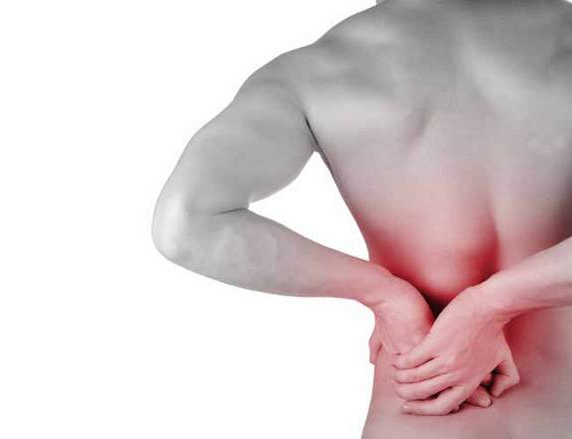There is so much evidence that is available that supports the integration of physical activity to keep cognitive function at optimum levels. In other words, getting up and doing stuff with your body is vital to maintaining your brain capacity.
The idea and concept of the self induced reward is ingrained in theorems as an aid to short term motivation and instilling a sense of achievement in the workforce are well documented. We work for a reward. There is always a carrot dangling at the end of achain somewhere in our psychological headspace.
Friends and clients wane lyrically about the 'zone' and the sheer delight of finding that rhythm and cadence of metronome precision. The mere thought of running or 'jogging' has me thinking of sweaty eyes, flushed face and ankle shattering kms of tarmac. Sometimes necessity indicates a challenge to your persona. The need to conquer no matter how ambivalent you are towards the task - so to the challenge I go, with fixed determination to try and conquer my fear and my resistance. And every now and then you end up surprising yourself.
Clean Living is life without toxins. Ingesting foodstuffs that hasn't had a whole heap of processing done to it before it reaches your mouth. Receiving food in its raw state is the best way to indulge in a clean lifestyle. Additives such as preservatives, sugars, flavourings and the like, all have toxic elements contained within them. Some of these are processed within the body and some stay around in fat deposits after the body has dealt with them. Now you aren't going to have a toxic system by eating a bowl of factory produced microwaved french fries. But consistent ingesting of this type of food is going to build up levels of toxins in your system which is going to raise issues over a sustained period.
I am always telling people, GET AWAY FROM THE DESK, despite you thinking that you possibly can't - you really CAN. When I am doing admin, I always try to ensure that at least 5min out of every hour, I get away from the desk, stand up and do something else, even if it is just walking to the kitchen and preparing a cup of tea. Or going to visit the boys at Mecca Espresso! it was instilled in me from the days of High School study. Set the alarm clock for 55min. That 5 min break saves you time and prevents you from making the mistakes that you have to go back and fix later.
With any injury, there is associated compensation. The body is very good at adapting. What this means is that the body will 'find a solution' if it cannot perform a movement utilising the known or 'normal' means of activation/contraction. (biomechanics) If a hamstring is not firing properly or is compromised, the body will utilise the power of adductors to complete a movement. If a shoulder stabiliser goes 'down', the body will recruit from another muscle in the chain to stabilise the shoulder for movement.
Noting the anterior and posterior chains means that you have to be conscious of both sides of the equation when addressing motion and movement with training. If we don't ensure that BOTH sides of the equation are in balance then we will have issues with overdominant muscles. So no matter how much stretching and maintenance you do, if you aren't being active on BOTH anterior and posterior, you cannot really achieve a productive alignment. The pelvis is possibly the most simplistic example, but the understanding rings true for all major joint spaces.
Chronic pain is classified as pain that has gone beyond the length of 3- 6 months. Perhaps a better description is 'pain that has gone beyond the expected period of healing'. When you sprain an ankle, the recovery is 4-6 weeks. When you break a bone the expected healing is 2-3 months. Acute pain is pain that hurts when you move. It makes you wince when you extend beyond what the body is capable of tolerating. Its identifiable and explicable. Chronic pain is pain that sustains and is constantly present. It doesn't decrease with time, it doesn't get better with immobilising joints, it just 'keeps on keeping on'.
A client this week was faced with the uneviable prognosis of disc bulges in the lower cervical spine, possibly brought about through excessive overhead lifting with her weekly training regimen. Another client this week is faced with a degenerative and debilitating knee injury (or in his case – injuries) that may be brought about by overuse and ‘training through pain’. Without jumping on the negative implications of CrossFit, Strongman or Powerlifting regimes, (as I am quite fond of them) there is no doubt that this style of intense exercise regime can hold many dangers when the smallest of compensations and deviations occurs due to fatigue, over-training or poor instruction.
As a therapist that is what I want to be giving my clients - RESULTS. When it comes down to it, when you are working with pain you want to get results. Without results, it is very difficult to convince someone that you are achieving significant change and also, keep them continuing with a treatment protocol or timeline. It's an aim I have - to provide a treatment protocol.
It’s a common complaint that people arrive in the centre with strains and sprains that are exacerbated, if not caused by poor posture at work and poor postural behaviour that is reinforced by work place actions and behaviours. We all have to sit at desks for some period (well ok not all of us) and multiple screens and transposing information from data sheets or documents can and does affect how we sit and stand for most of our working day.
Depression has a socio-economic predeliction to it. It is genre specific. Sadly it is also very aggressive. In so many ways it targets groups of people and creates symptoms and conditions that are remarkably similar, almost to the point where you think it is tactical in it's approach. It also occurs in waves and varying degrees and whilst not all forms of depression are clinically determined, sometimes just feeling a bit low or down can be a precursor to a more devious beast that lies within.
In any form of recovery from injury, the ‘activation’ stage is the realm of actually doing exercises and key movements to ensure that muscles work ‘sequentially’ and as a group, to perform safe and efficient movement. This is also where a lot of patients fall down because they ‘don‘t do their homework’ These all important exercises that a patient has to do to contribute to their own recovery are a vital part of the program to recovery and pain free movement.
Fascia is the body’s connective tissue. It covers every muscle, organ and muscular compartment as well as going right down to every tendon, muscle fibre and even deeper to the microscopic level of muscle fascicles. It is part of what gives our body shape and is contractile. It serves as the connection for nerves and blood vessels and plays a great role in allowing our bodies to move in transverse movements across the midline of the body and involving a complex co-ordination of muscles to effect movement. Complex movements with power require a great deal of muscular contraction as well as contraction of the fascial system.
Plantar Fasciitis is the most common of injuries in people who run and jump. Court sports persons and runners in general suffer from this condition which is an inflammation of the connective tissue that covers the underside of the foot. The condition is usually diagnosed by intense pain upon placing your foot down on the floor when you first wake up in the morning. Slight limping until the fascia warms up and becomes malleable is a certain indicator and it can leave you unable to walk for a brief time in the morning hours. Continuing to ignore this condition can result in a tear which will leave you unable to place any weight on the foot without intense pain.
The 'Spondy' family is basically a term that applies to our spine (spondylos- greek, vertebrae). And furthermore - the inflammation of the joints of our spine. In most cases of the 'Spondy' family we are looking at inflammation of the spine. As with any condition there are variations but the 'spondy' family seems to have quite a few members to it. So let's take a look at some of the terms to get you familiar and differentiate exactly what part of the 'spondy' family you may belong to.
I find many people become more complacent about exercise and routine in winter, with dark nights when you leave work, rainy weekends preventing you from getting outside, there are too many reasons to say 'oh I just won't even bother today'. We all do it. It becomes even more important during this time to ensure you allow yourself the time to invest in some regular exercise.
Personality is a major driver of this conundrum. When looking at recovery from an injury, one of the main aspects to take into account is 'personality'. Are you an active recovery person, or are you happy to take the path of least resistance when it comes to re-engaging in physical activity. Both aspects can be your own worst nightmare if you are are not careful to appraise where you are seated in the 'injury recovery' spectrum.
Listening to your body is all important. Managing injury is as much a part of the performance as is the regular and regimented training that goes into preparing for an event months in advance. SO what do you do when you do find yourself not being able to complete a basic training run and you have 3 weeks left before the event?
As it gets colder, our bodies want to slow down and go inward but our work/family/social commitments often require us to stay in Summer or Spring mode, so things can go a bit off kilter. We can feel emotionally worn-out, unable to sleep or focus, and we may have aches and pains or suffer poor digestion as our bodies feel over extended. It is also common for lingering lung problems to show up, such as sinus and allergies or a constant sniffling nose or dry throat. Alongside acupuncture and personalised Chinese medicine formulas there are some simple self-care rituals I encourage my patients to do to help build the body’s resistance to the cold-weather woes.



